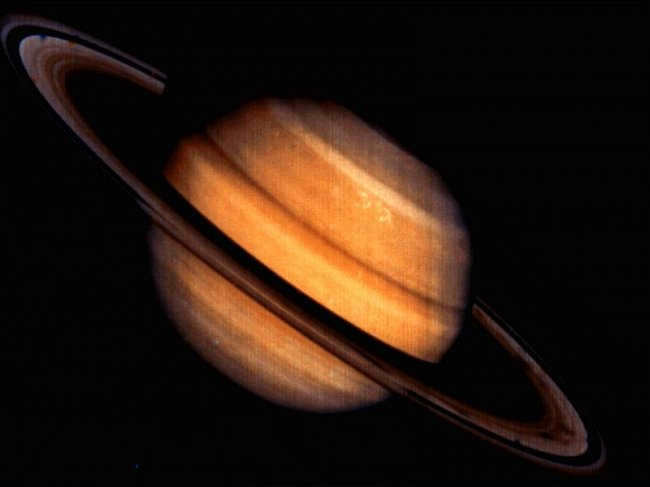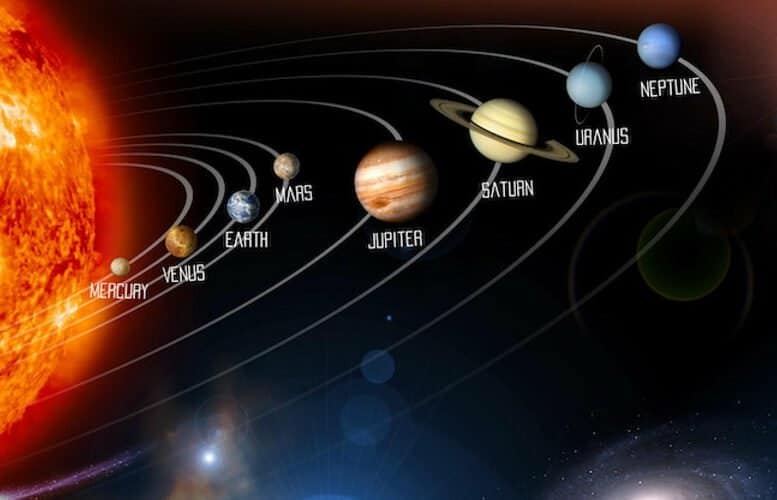The solar system is home to numerous celestial bodies that are notable for their size.
The solar system’s biggest star
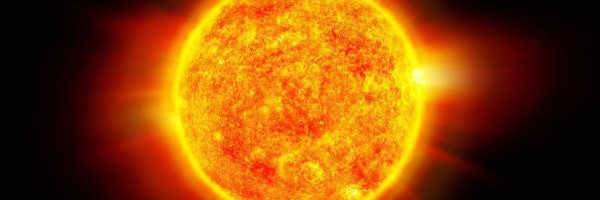
Undoubtedly, the Sun holds the title of the biggest star within our solar system. Its massive size of 1.4 million kilometers makes it stand out from the rest. While there is a possibility of the Sun having a partner star, it is not visible to us due to its comparable brightness and mass.
The biggest planet in our solar system
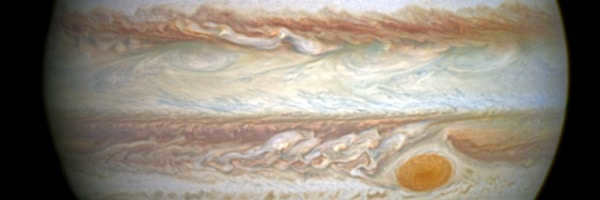
Jupiter, known as the gas giant, holds the title of being the largest planet in our solar system. With an equatorial line stretching over 141,000 kilometers, it surpasses all other planets in size. In fact, Jupiter is so colossal that its mass is 2.5 times greater than the combined mass of all the other planets. However, despite its immense size, Jupiter is unable to grow any larger due to the gravitational forces that would cause it to collapse inward.
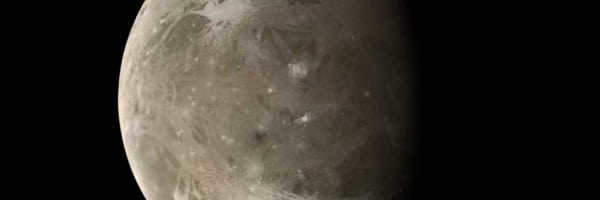
Taking the top spot in terms of size is Ganymede, which boasts a diameter of 5,268 kilometers. Interestingly, Ganymede is actually larger than both Mercury, Pluto, and the various dwarf planets. It’s worth noting that Ganymede could have potentially been classified as a planet if it revolved around a star. Previously, it was believed that Titan held the title for largest moon, but this was due to its dense atmosphere adding extra bulk.
Unveiling the Solar System’s Mighty Peak
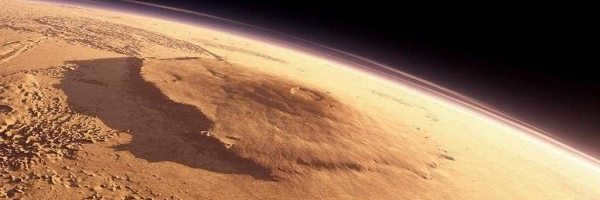
Olympus, the volcano on Mars, holds the title for being the highest mountain in the entire Solar System, standing at a staggering 27 kilometers tall, which is three times taller than Mount Everest. Its colossal size can be attributed to the absence of tectonic activity. Unlike on Earth, where tectonic plates constantly shift and reshape the landscape, on Mars, volcanoes like Olympus simply spewed out lava, which then solidified and built up over time. This geological wonder is not only the largest mountain on Mars but also the largest volcano in the entire Solar System.
The most massive asteroid in our solar system

The largest asteroid used to be Ceres, with a diameter of 974 kilometers. However, it has since been reclassified as a dwarf planet. Therefore, the title of largest asteroid now belongs to Vesta, which measures 530 km in diameter and accounts for 9% of the asteroid’s mass.
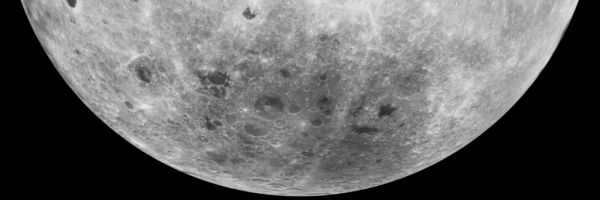
The Aitken Basin on the lunar surface is considered to be the most extensive crater within the entire Solar System, spanning an impressive width of 2,500 kilometers. Interestingly, this colossal basin remained undiscovered until humans successfully landed on Earth’s celestial companion. However, there is a possibility that the title of the largest crater could be claimed by the Martian Borealis basin, which measures a staggering 8,500 kilometers in diameter.
The emergence and development of the solar system
The composition and organization of the Solar System
Intriguing and noteworthy aspects regarding the solar system
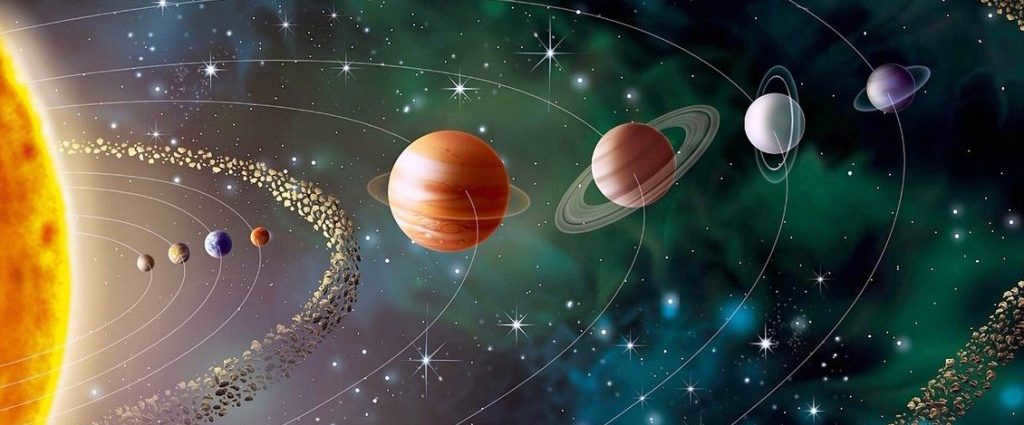
Hello there, esteemed readers. The solar system comprises a group of planets that revolve around the Sun, alongside the Sun itself and several other celestial entities.
Only natural objects that orbit a star or a planet are considered part of the solar system. Naturally, satellites launched from Earth are not included.
However, let’s delve deeper into what the solar system entails and its structure. Let’s explore the various small and large bodies that constitute it. We shall identify the largest and smallest planets and present a comprehensive list in order. Furthermore, we will examine their respective models and representations.
Planets in the solar system
Simply put (for kids), the solar system consists of the Sun and everything that orbits around it.
If you want to learn more about the Sun itself (the main star of the system), you can click on the link above or quickly read the information about it at the end of this article. Some interesting facts to note are that the Sun makes up 99.86% of the total mass of the solar system, highlighting its undeniable significance.
The solar system is a planetary system that includes the Sun as its central star, as well as all the natural celestial objects that revolve around it. It formed approximately 4.57 billion years ago through the gravitational collapse of a gas and dust cloud.
How many planets are there in the solar system and what is their order?
Following the Sun, the planets are the next largest celestial bodies. So, how many planets exist in the solar system? Until recently, it was believed that there were a total of 9 planets revolving around our star:
- Mercury.
- Venus.
- Earth.
- Mars. This, along with the three preceding planets, is part of the Earth group.
- Jupiter.
- Saturn.
- Uranus.
- Neptune. This, along with the three preceding planets, is referred to as the gas giants.
- Pluto.
Has the status of Pluto as a planet changed?
- Pluto’s mass is smaller than that of the Moon, Earth’s satellite, which is insufficient for Pluto to clear its orbit from other bodies. In contrast, many objects with the same composition as Pluto populate its orbit.
- The identification of a celestial body, named Erida, located beyond Pluto’s orbit, with a significant mass and diameter.
- The center of mass of the Pluto-Charon system (Charon being a satellite) lies outside of these two bodies.
Many things became clear after conducting detailed studies of the Kuiper belt, which is comprised of numerous icy objects measuring approximately 100 kilometers in diameter. In comparison, Pluto itself has a diameter of 2400 kilometers.
As a result of these discoveries, astronomers were confronted with the task of redefining the definition of a planet.
The planets in the Earth group, which includes the smallest planet in the solar system.
The planets in the solar system revolve around each other. The first four planets in the solar system are collectively known as the Earth group:
- Mercury, which is the smallest and closest planet to the sun. It takes 88 days for Mercury to complete one rotation around the sun.
- Venus, which rotates in the opposite direction to its orbital motion. Uranus is another planet that shares this characteristic. Venus is the hottest planet, with temperatures in its atmosphere reaching up to +470°C.
- Earth, the third planet in the solar system, is known for having the highest density and diameter among the planets in its group. It also has free oxygen in its atmosphere and is home to one natural satellite, the Moon.
- Mars. The fourth planet has an atmosphere primarily made up of carbon dioxide. Its reddish hue is due to the presence of iron oxide in the soil.
- Jupiter – the largest planet. It has a mass 318 times that of Earth and is composed mainly of hydrogen (H) and helium (Ne). Jupiter also has numerous satellites, including one larger than Mercury.
- Saturn. This planet is famous for its rings and also has a number of satellites.
The Giant Planets, Including the Largest
The solar system’s giant planets follow the four planets of the Earth group:
The photo above depicts the planets within our solar system and illustrates their true size ratios.
Minor Celestial Bodies in the Solar System
Asteroids
These celestial bodies orbit our star and are typically irregular in shape, resembling blocks of stone rather than spheres. They lack an atmosphere and some may have satellites. Asteroids are not included in the conventional solar system model.
The asteroid belt is located after the orbit of the fourth planet and extends until the orbit of the fifth planet, Jupiter. Asteroids are the most abundant minor bodies within our solar system, varying in size from a few meters to hundreds of kilometers. Despite being significantly smaller than planets, these bodies have the potential to have satellites.
Small planets
A variety of asteroids with substantial masses and sizes have been designated as small planets. These include:
Celestial bodies
A comet is a luminous celestial object with a distinct head and tail. The brightness of a comet is directly influenced by its proximity to the Sun.
A comet is composed of the following components:
- Nucleus. It encompasses nearly the entire mass of the comet.
- The coma is a hazy envelope surrounding the nucleus.
- The tail. It extends in the opposite direction of the Sun.
Halley’s Comet is a well-known comet that is currently nearing the Sun while simultaneously moving away from it. The comet’s head consists of frozen water, metal particles, and a variety of compounds. The nucleus of this comet measures approximately 10 kilometers in diameter. It takes about 75 years for Halley’s Comet to complete its orbit (ellipse) around the Sun.
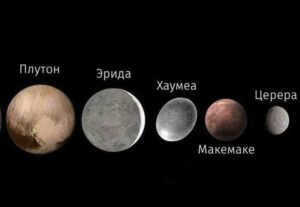
The point in the orbit where the celestial body is closest to the star is referred to as perihelion, while the point farthest away is known as aphelion.
Meteorites
These are relatively small celestial objects that impact the surfaces of larger celestial bodies. Meteorites can consist of iron, rock, or iron-stone. Approximately 2,000 tons of meteorites fall to Earth’s surface each year. Some meteorites weigh just a few grams, while others can weigh several tens of tons. For instance, the Tunguska meteorite, which crashed into Earth in 1908, destroyed hundreds of hectares of forest.
Research on our solar system will continue for many more years, providing us with further facts and information about planets, comets, asteroids, and other celestial bodies.
The Sun: A Stellar Object in the Solar System
The Sun, our system’s central star, serves as the foundation for the arrangement of celestial bodies within the solar system. It possesses a mass of 1.989 × 10^30 kg, accounting for 99.86% of the system’s overall mass. With a diameter of 1.391 million kilometers, it exists as a luminous ball of gas, emitting an enormous amount of energy as a result of its core processes.
Belonging to the classification of stars known as “yellow dwarfs,” the Sun falls within the temperature range of 5000 to 7500 K.
Structure of the Sun
When considering the composition of the solar system, it is important to start with its center, which is the center of the Sun. The star can be divided into several distinct layers:
- The core. Within this innermost region, hydrogen atoms undergo fusion, resulting in the release of tremendous amounts of energy. Protons and neutrons also combine to form helium nuclei. The core has a temperature of 15 million K, which is 2.5 times hotter than the surface. It extends 173,000 km from the Sun’s center, accounting for approximately 20% of the star’s radius.
- The radiation zone. Within this zone, photons emitted by the core travel for about 200,000 years, gradually losing energy as they collide with plasma particles.
- The Photosphere is the Sun’s visible surface, with a remarkably thin thickness of just 100 km (which is relatively small compared to the Sun’s overall size).
- Situated directly above the photosphere, the chromosphere is a heterogeneous layer within the solar atmosphere. It exhibits a temperature range from 6,000 K to 20,000 K.
- The corona, found in the outermost layer of the solar atmosphere, is not visible to the naked eye due to its significantly lower brightness compared to a star. It can only be observed during eclipses or with additional equipment. The temperature within the corona reaches a scorching 1,000,000 K, making it the hottest region in the entire solar system.
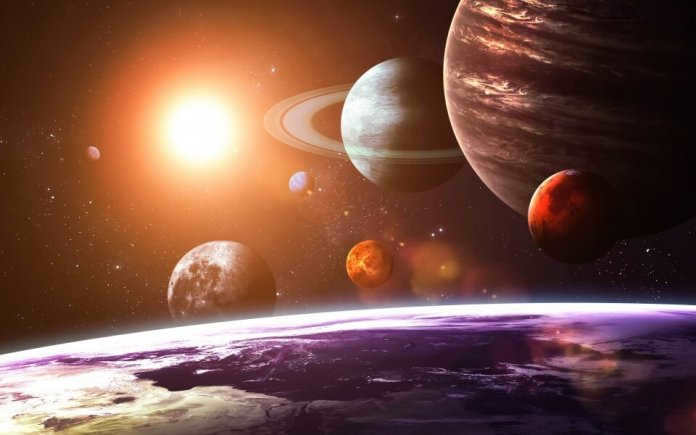
To determine the size of a planet, one must take into account factors such as its mass and diameter. The largest planet in our solar system is a staggering 300 times the size of Earth. In fact, its diameter is eleven times that of our home planet. If you’re curious about the biggest planets in the solar system, including their names, sizes, photos, and notable characteristics, be sure to check out our comprehensive ranking.
Comparison table of planetary characteristics
The size, weight, length of day and distance from the sun are provided in relation to Earth.
| Mercury | 0.382 | 0.055 | 0.38 | 0.241 | 58.6 | 5427 | 0 |
| Venus | 0.949 | 0.815 | 0.72 | 0.615 | 243 | 5243 | 0 |
| Earth | 1 | 5515 | 1 | ||||
| Mars | 0.53 | 0.107 | 1.52 | 1.88 | 1.03 | 3933 | 2 |
| Jupiter | 11.2 | 318 | 5.2 | 11.86 | 0.414 | 1326 | 69 |
| Saturn | 9.41 | 95 | 9.54 | 29.46 | 0.426 | 687 | 62 |
| Uranus | 3.98 | 14.6 | 19.22 | 84.01 | 0.718 | 1270 | 27 |
| Neptune | 3.81 | 17.2 | 30.06 | 164.79 | 0.671 | 1638 | 14 |
| Pluto | 0.186 | 0.0022 | 39.2 | 248.09 | 6.387 | 1860 | 5 |
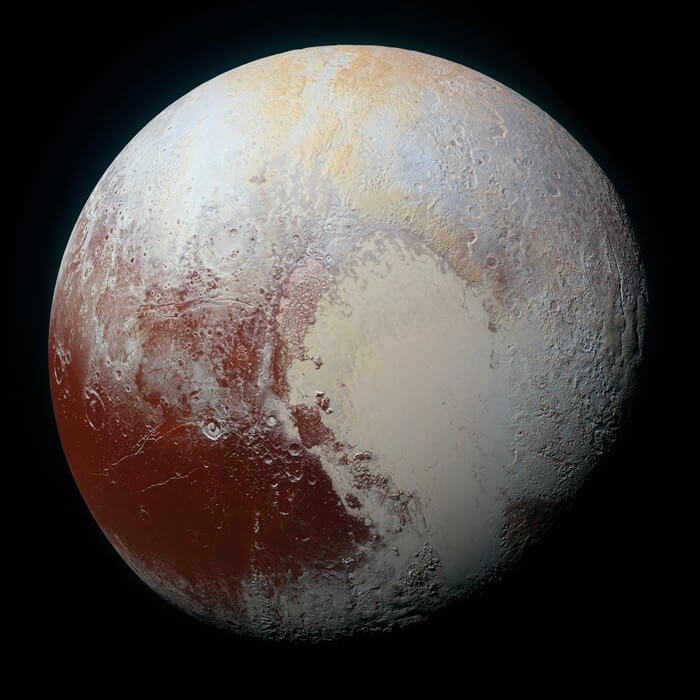
Pluto, the second largest dwarf planet in the solar system following Ceres, was never the largest among the full-fledged planets, as its mass is only 1/6th that of the Moon. With a diameter of 2370 km, Pluto consists of a combination of rock and ice. Consequently, it comes as no surprise that its surface temperature is a chilling minus 230 °C.
8. The diameter of Mercury is approximately 4,879 kilometers.
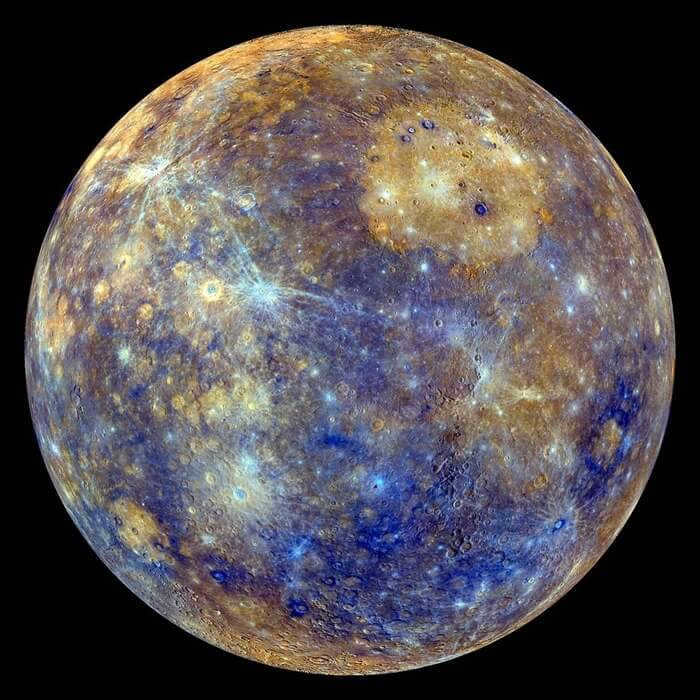
Mercury is a minuscule celestial body, with a mass that is nearly twenty times lighter than Earth’s and a diameter that is two and a half times smaller. In fact, Mercury’s size is more similar to the Moon’s than to Earth’s, which makes it the tiniest planet in our solar system. Its surface is covered in a rocky terrain adorned with craters. Recently, the Messenger spacecraft has confirmed the presence of icy water deep within the craters on the perpetually shadowy side of Mercury.
Mars, with a diameter of approximately 6,792 kilometers, is the seventh planet.
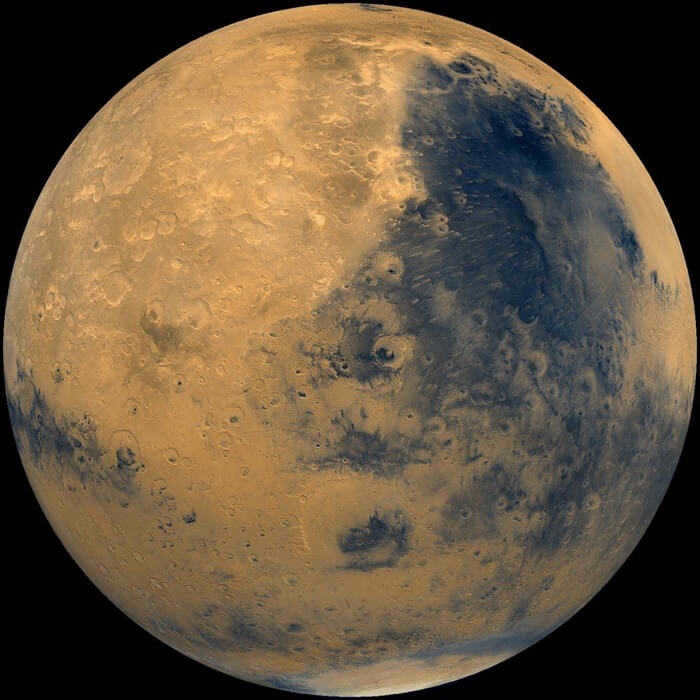
Mars, the fourth closest planet to the Sun, is approximately half the size of Earth with a diameter of 6,792 km. Despite its smaller size, its mass is only one-tenth of Earth’s. This unique planet has a tilt of 25.1 degrees, which gives it changing seasons similar to Earth. A Martian day, also known as sols, lasts 24 hours and 40 minutes. In the southern hemisphere, summers are hot and winters are cold. In contrast, the northern hemisphere experiences milder seasons without such extreme temperature variations. These moderate conditions make Mars an ideal environment for constructing greenhouses and cultivating potatoes.
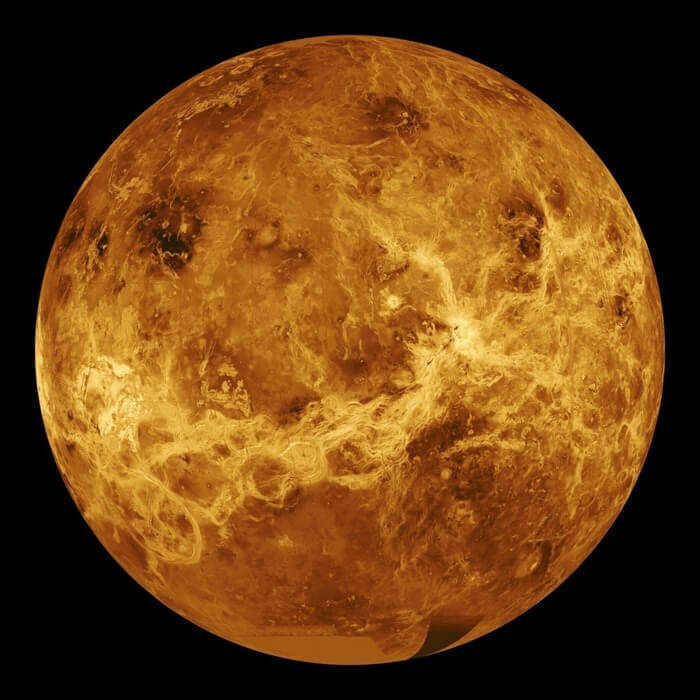
Ranked sixth among the largest and smallest planets is a celestial body that bears the name of the goddess of beauty. Being in close proximity to the Sun, it is the first to appear in the evening and the last to disappear in the morning. Hence, Venus has long been recognized as the “evening star” and “morning star”. With a diameter of 12,100 km, it is almost comparable in size to Earth (just 1000 km smaller) and has 80% of Earth’s mass.
Venus’ surface is primarily composed of vast plains of volcanic origin, with the rest being comprised of massive mountains. Its atmosphere consists mainly of carbon dioxide, accompanied by dense clouds of sulfur dioxide. This atmosphere possesses the most potent greenhouse effect observed in the entire solar system, resulting in Venus’ temperature being maintained at a scorching 460 degrees.
5. The Earth spans approximately 12,742 kilometers in diameter.
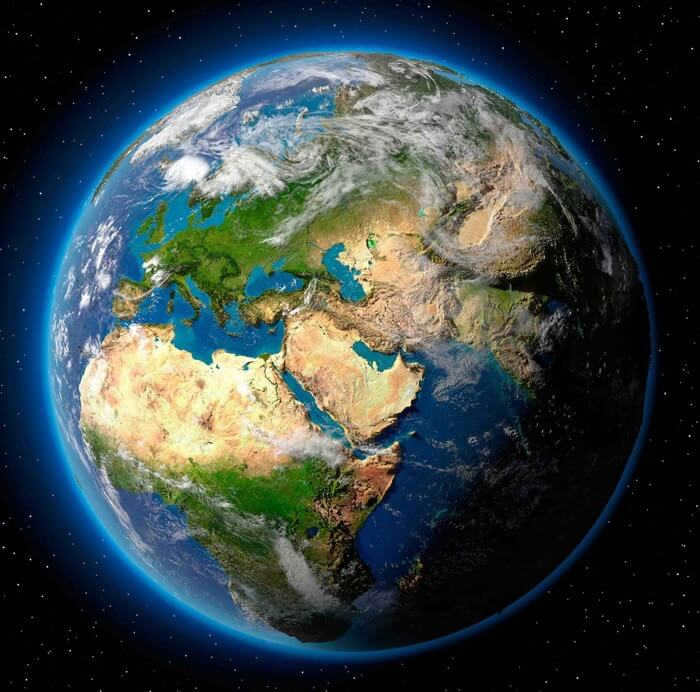
Earth, the third planet in our solar system, is unique among all the planets because it is the only one known to support life. It has a tilt of 23.4 degrees on its axis, a diameter measuring 12,742 km, and a mass of 5.972 septillion kg.
Our planet is incredibly ancient, with an estimated age of 4.54 billion years. Throughout most of its existence, Earth has been accompanied by its natural satellite, the Moon. Scientists believe that the Moon was formed when a massive celestial body, possibly Mars, collided with Earth, resulting in the ejection of enough material to allow the Moon to take shape. The Moon has had a stabilizing effect on Earth’s axis tilt and plays a crucial role in creating ocean tides.
“Referring to this celestial body as Earth is not entirely accurate, as it is clearly dominated by a vast ocean.” – Arthur C. Clarke.
4. Neptune ∼ 49,000 km
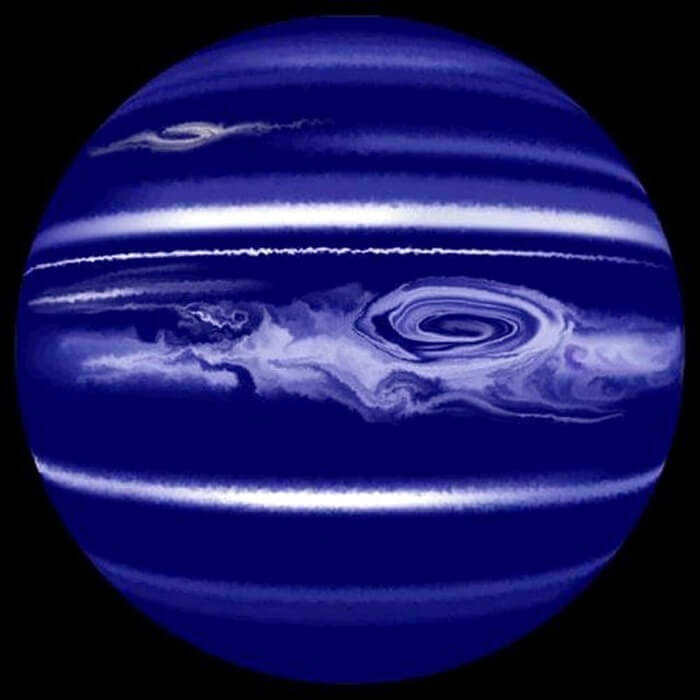
Neptune, the gas giant planet in our Solar System, is the eighth closest celestial object to the Sun. With a diameter of 49,000 km and a mass 17 times greater than that of Earth, Neptune boasts impressive cloud bands. These cloud bands, as well as storms and cyclones, were captured in photographs taken by the Voyager 2 spacecraft. The wind speed on Neptune can reach an astonishing 600 m/s. Due to its vast distance from the Sun, Neptune is known for its extreme coldness, with temperatures in the upper atmosphere dropping to as low as minus 220 degrees Celsius.
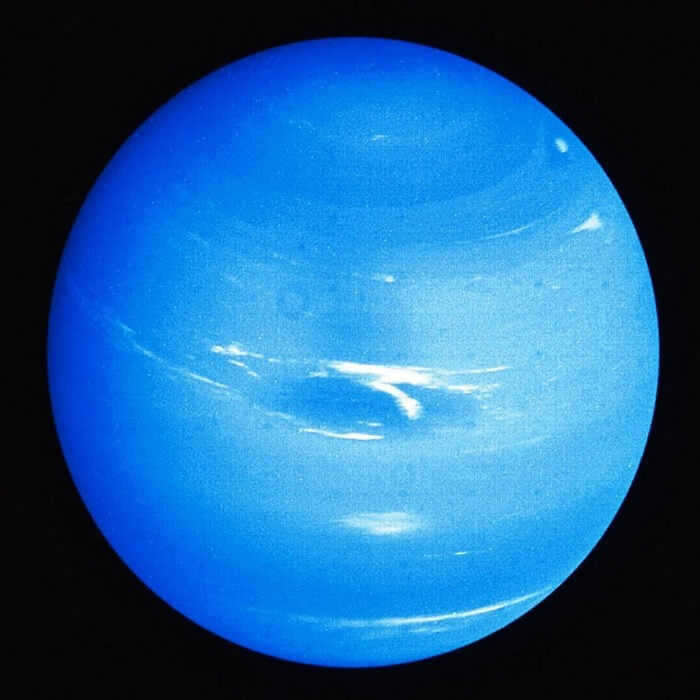
Ranked third among the largest planets in the solar system, Uranus is the seventh closest to the Sun, the third largest in size, and the fourth heaviest overall. With a diameter of 50,000 km, Uranus is four times larger than Earth, and its mass is 14 times that of our planet.
Uranus boasts a total of 27 known moons, with sizes ranging from over 1,500 km to under 20 km in diameter. These moons are primarily composed of ice, rocks, and various trace elements. The planet itself has a solid core made of rock, which is surrounded by a layer of water, ammonia, and methane. The atmosphere of Uranus is mainly composed of hydrogen, helium, and methane, with a layer of clouds at the top.
2. Saturn is approximately 116,400 km in diameter.
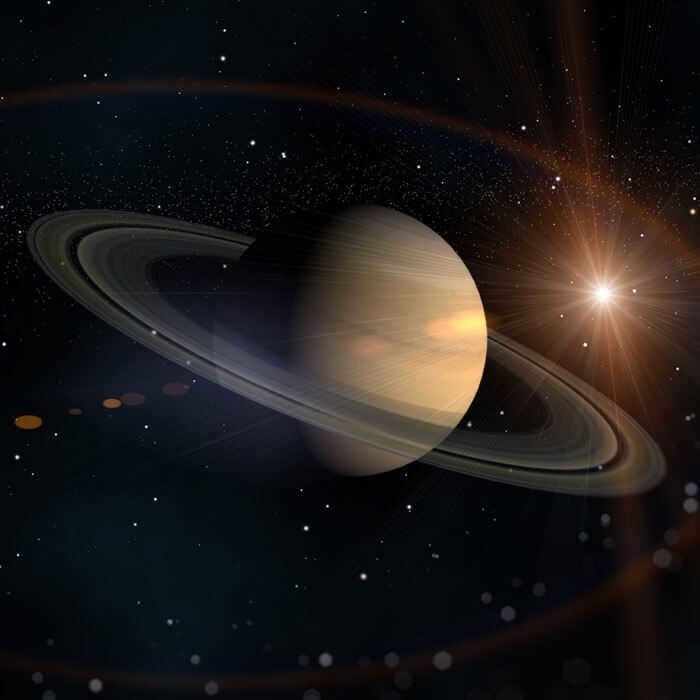
The second largest planet in our solar system is renowned for its ring system. In 1610, Galileo Galilei made the first observation of Saturn and believed that it was accompanied by two other planets positioned on either side of it. Later, in 1655, Christian Huygens, using an improved telescope, was able to make detailed observations of Saturn and suggest the presence of its rings. These rings span a distance of 7000 km to 120,000 km above the surface of Saturn. The planet itself has a radius 9 times that of Earth (57,000 km) and a mass 95 times that of Earth.
1. Jupiter has a diameter of approximately 142,974 kilometers.
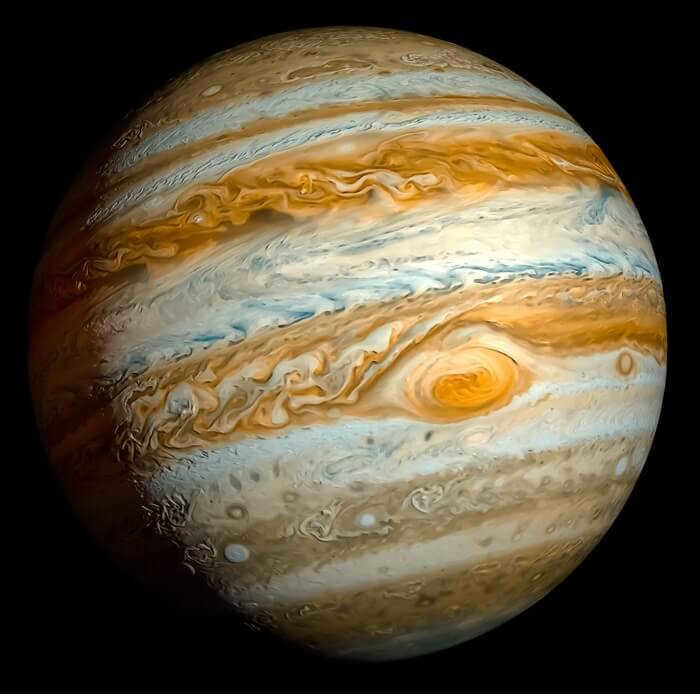
What we know about Jupiter
Prior to the invention of the telescope, planets were observed as wandering objects in the sky. This is why the Greek word for “planet” translates to “wanderer”. Currently, our solar system consists of 8 recognized planets, even though initially 9 celestial bodies were classified as planets. In the 1990s, Pluto was reclassified from a planet to a dwarf planet. Jupiter is the largest planet in our solar system.
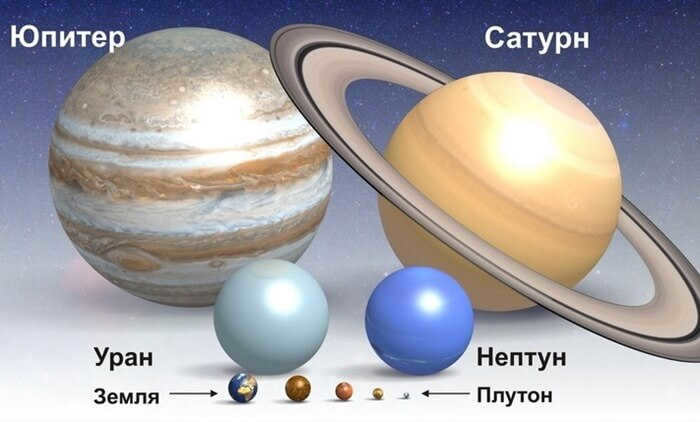

Jupiter is an enormous planet with a radius of 69,911 kilometers. In fact, all of the largest planets in our solar system could easily fit inside Jupiter, as shown in the photo. To put it in perspective, Jupiter’s size is so immense that it can contain approximately 1,300 Earths within its body.
As the fifth planet from the Sun, Jupiter derives its name from the Roman god. Its atmosphere is primarily composed of gases, predominantly helium and hydrogen, hence its classification as a gas giant. Beneath its gaseous exterior, Jupiter’s surface is composed of a vast ocean of liquid hydrogen.
One remarkable feature of Jupiter is its magnetosphere, which is the strongest among all the planets in the solar system. In fact, Jupiter’s magnetosphere is approximately 20,000 times more powerful than Earth’s magnetosphere.
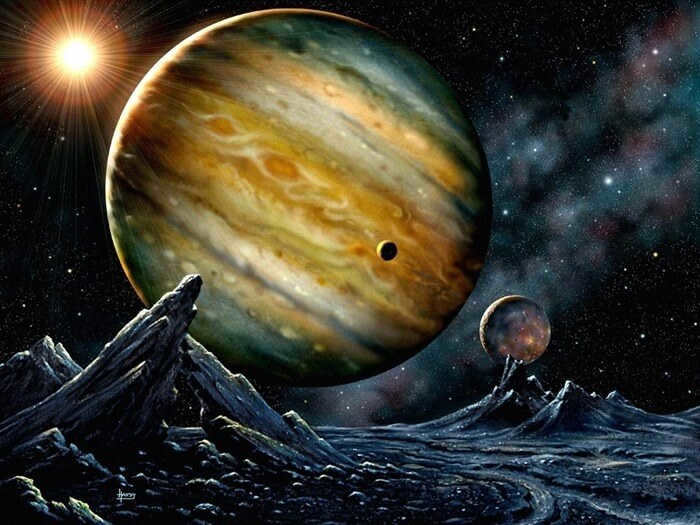

Jupiter, the largest planet in our solar system, rotates on its axis at a faster rate compared to its neighboring planets. It completes one full rotation in approximately 10 hours, while Earth takes 24 hours. Due to this rapid spin, Jupiter appears bulged at its equator and slightly flattened at its poles. The planet is about 7 percent wider at its equator than at its poles.
This colossal celestial body, which is the largest in our solar system, completes one orbit around the Sun in approximately 11.86 Earth years.
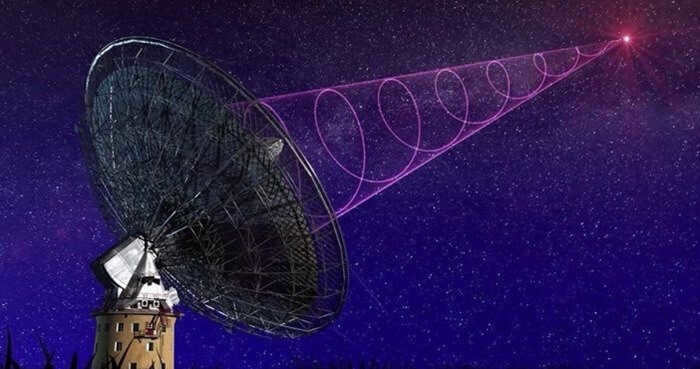

Jupiter emits powerful radio waves that are detectable from Earth. These waves manifest in two different ways:
- Intense bursts occur when Io, the nearest of Jupiter’s large moons, crosses specific areas of the planet’s magnetic field.
- Jupiter’s surface and its radiation belts continuously emit radio waves due to high-energy particles. These waves have the potential to aid scientists in exploring the moons’ oceans.
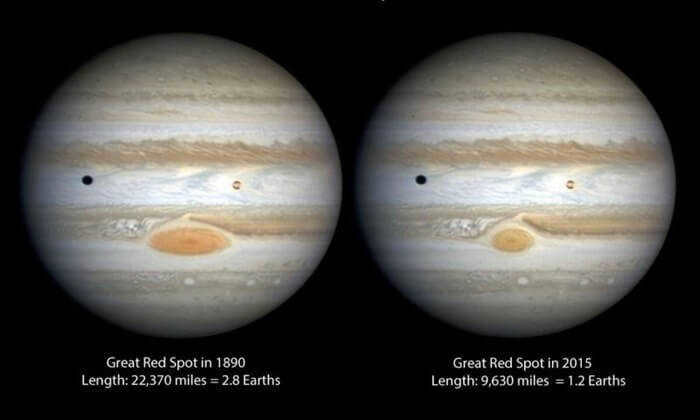
Without a doubt, the most notable characteristic of Jupiter is its remarkable feature known as the Great Red Spot, a colossal hurricane that has been raging for over three centuries.
- The Great Red Spot has a diameter three times larger than that of Earth, and its outer boundary rotates around the center in a counterclockwise direction at an astonishing velocity of 360 kilometers per hour.
- The storm’s color, which typically varies from brick red to light brown, may be attributed to the presence of minute amounts of sulfur and phosphorus.
- Over time, the size of the spot either increases or decreases. A century ago, the formation was twice as large and significantly brighter than it is at present.
While Jupiter has numerous other spots, it is only in the Southern Hemisphere where they endure for extended periods of time.
The rings of Jupiter
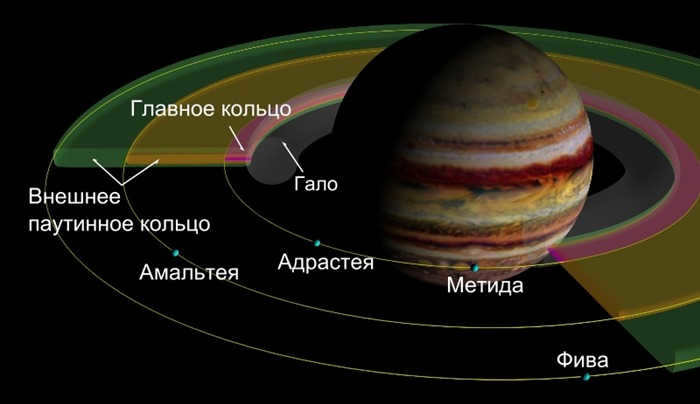

Unlike Saturn’s rings, which can be easily observed from Earth using small telescopes, the rings of Jupiter are not as visible. Their presence was first discovered through data collected by the Voyager 1 spacecraft in 1979, but their origin remained a mystery. Further data from the Galileo spacecraft, which orbited Jupiter from 1995 to 2003, later confirmed that these rings were formed as a result of meteoroid impacts on small satellites orbiting the massive planet itself.
Jupiter’s ring system consists of:
- halo – an inner layer composed of small particles;
- the main ring, which is brighter than the other two;
- the outer “spider web” ring.
The primary ring is compressed, with a thickness of approximately 30 km and a width of 6400 km. The halo stretches halfway down from the primary ring to the upper regions of the Jupiterian clouds and grows in size through its interaction with the planet’s magnetic field. The third ring, named the spider ring due to its see-through nature, is also present.
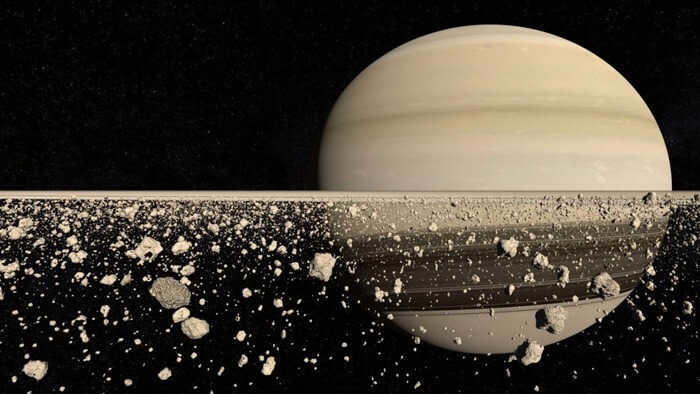
The impact of meteorites on the small inner moons of Jupiter results in the generation of dust, which subsequently descends into orbit around Jupiter, thus giving rise to the formation of rings.
The Satellites of Jupiter
Jupiter boasts a total of 53 officially recognized moons that revolve around it, along with an additional 14 moons that are yet to be confirmed.
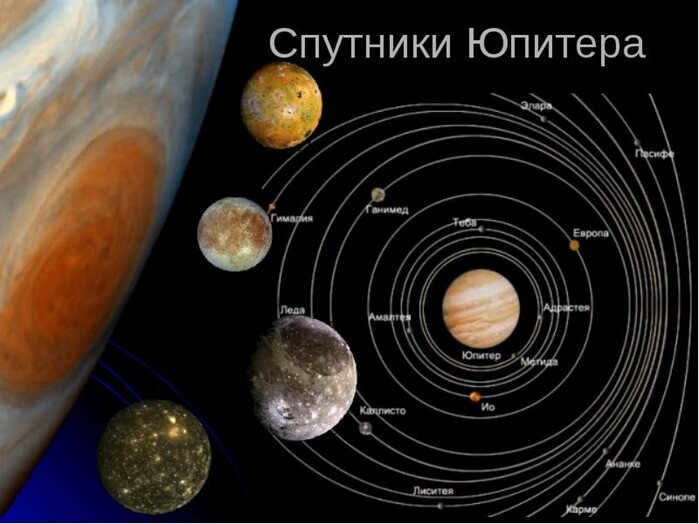
The Galilean satellites, which consist of Io, Ganymede, Europa, and Callisto, are the four largest moons orbiting Jupiter. These moons were first observed and named by Galileo Galilei in 1610. They are named after the companions of Zeus, the Greek god, whose Roman equivalent is Jupiter.
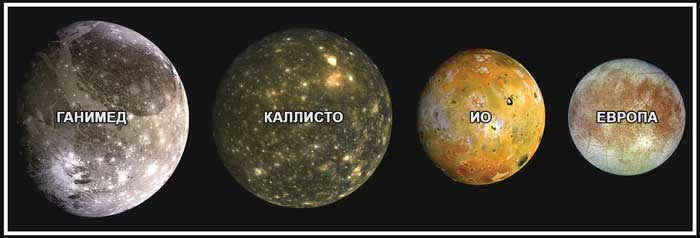
Io is known for its active volcanoes; Europa is believed to have a hidden ocean beneath its icy surface and could potentially support life; Ganymede holds the title of being the largest moon in the entire solar system and has its own magnetic field; and Callisto, with its low reflectivity, is thought to be composed of dark, nondescript rocks. It has been hypothesized that the surface of this celestial body lacks coloration.
Video: The largest planet in our solar system is Jupiter
We trust that we have provided a comprehensive response to the inquiry regarding which celestial body within our solar system holds the distinction of being the largest!
What is the total count of planets in our solar system and what is the nature of these celestial bodies?
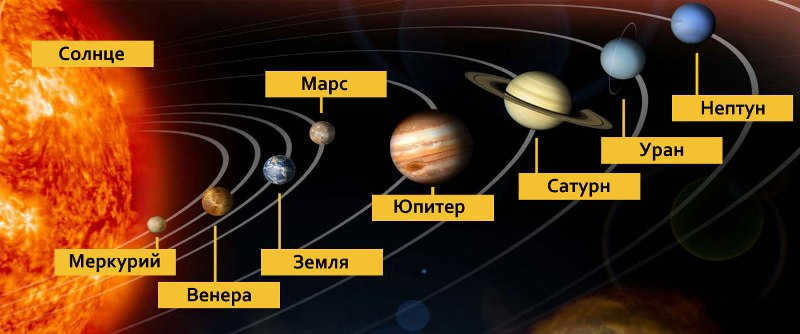
Some background on the solar system
In the past, the definition of a planet included any celestial body that revolves around a star, reflects light from it, and is bigger than an asteroid.
In ancient Greece, there were references to seven celestial bodies that traverse the sky in relation to the fixed stars. These celestial bodies were: the Sun, Mercury, Venus, the Moon, Mars, Jupiter, and Saturn. The Earth was not included in this enumeration, as the ancient Greeks perceived the Earth to be the focal point of all existence. It was only in the 16th century that Nicolaus Copernicus, in his scientific opus titled “On the Revolutions of the Celestial Spheres,” deduced that the Sun, not the Earth, should be at the core of the planetary system. Consequently, the Sun and the Moon were omitted from the list and the Earth was added. Subsequently, Uranus and Neptune were included after their discovery in 1781 and 1846 respectively, aided by the advent of telescopes.
Pluto held the status of the most recently discovered planet in the solar system from 1930 until a recent time.
After the groundbreaking work of Galileo Galilei, who invented the world’s first telescope to study the stars, astronomers have now established a definitive definition of what constitutes a planet.
A planet is defined as a celestial object that meets four specific criteria:
– It must orbit a star, such as the Sun.
– It must have enough gravity to form a spherical or nearly spherical shape.
– It must not have any other large objects in its orbit.
– It must not be a star itself.
On the other hand, a star is a cosmic body that emits light and serves as a powerful source of energy. This energy is generated through thermonuclear reactions and gravitational compression, resulting in the release of a tremendous amount of energy.
Today’s lineup of planets in the solar system
The solar system is a celestial arrangement that consists of a central star – the Sun – and a collection of natural space objects that revolve around it.
As of now, the solar system is comprised of eight planets – four inner planets known as terrestrial planets and four outer planets known as gas giants.
The terrestrial planets include Earth, Mercury, Venus, and Mars. These planets are primarily composed of silicates and metals.
The gas giants in the outer region of the solar system are Jupiter, Saturn, Uranus, and Neptune. These planets are predominantly made up of hydrogen and helium.
When considering the qualities of the planets within our Solar System, it would be remiss to overlook the central figure: the Sun. As such, let us commence our exploration with this celestial body.
Sun
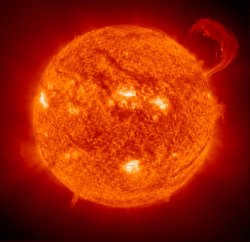
The star that is responsible for the creation of all living organisms in the solar system is known as the Sun. It is surrounded by various celestial bodies such as planets, dwarf planets, their moons, asteroids, comets, meteorites, and space debris.
The Sun came into existence approximately 5 billion years ago. It is a round, luminous plasma sphere with a mass exceeding that of the Earth by more than 300,000 times. The surface temperature of the Sun exceeds 5000 degrees Kelvin, while the core temperature reaches more than 13 million K.
The Sun, situated in the Milky Way galaxy, is a colossal and radiant celestial body. It resides approximately 26 thousand light years away from the central hub of the Galaxy and completes a full orbit around it within a span of 230-250 million years! In contrast, the Earth revolves around the Sun once every year.
Mercury: The Planet Closest to the Sun
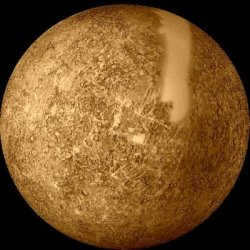
Mercury, the smallest planet in our solar system, orbits closest to the Sun. Unlike other planets, Mercury does not have any satellites.
Billions of years ago, the planet’s surface was bombarded by meteorites, resulting in the formation of numerous craters. These craters range in diameter from just a few meters to over 1000 km.
Mercury’s atmosphere is extremely thin and is mainly composed of helium. It is constantly affected by the solar wind. Due to its proximity to the Sun and the absence of an atmosphere to retain heat, the planet experiences extreme temperature variations, ranging from -180 to +440 degrees Celsius.
In terms of orbital period, Mercury completes a full revolution around the Sun in just 88 days, much shorter than Earth’s year. Additionally, a day on Mercury lasts for 176 Earth days.
Venus, the celestial body
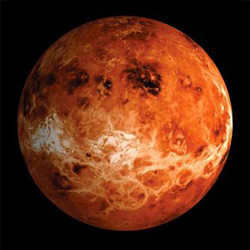
Venus, the second nearest planet to the Sun in the solar system, is often referred to as “Earth’s sister” due to its similar size to Earth. Unlike Earth, Venus has no natural satellites.
The planet’s atmosphere is primarily composed of carbon dioxide, with traces of nitrogen and oxygen. The atmospheric pressure on Venus is over 90 times that of Earth’s, making it about 35 times more dense.
Due to its high concentration of carbon dioxide and its compacted atmosphere, as well as its proximity to the Sun, Venus is known as “the hottest planet”. Surface temperatures on Venus can reach up to 460°C.
After the Sun and Moon, Venus is one of the most prominent objects in the Earth’s sky.
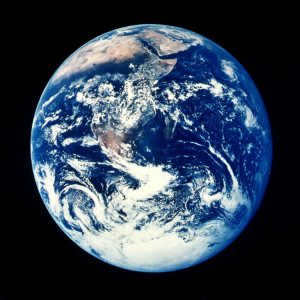
Earth, the lone inhabited planet in the known universe, stands apart from the rest as the largest, heaviest, and densest of the inner planets within our solar system.
With an estimated age of 4.5 billion years, Earth became a cradle for life approximately 3.5 billion years ago. Among the Earth-group planets, the Moon takes the crown as the largest natural satellite.
What sets Earth apart from its planetary counterparts is its atmosphere, which owes its uniqueness to the presence of life. Nitrogen dominates the composition of the atmosphere, alongside oxygen, argon, carbon dioxide, and water vapor. The Earth’s magnetic field and the ozone layer serve as protective shields, ameliorating the hazardous impact of solar and cosmic radiation on life forms.
Due to the presence of carbon dioxide in the atmosphere, Earth also experiences a greenhouse effect. Although not as intense as on Venus, the absence of this effect would result in a decrease in air temperature by approximately 40°C. Without the atmosphere, temperature fluctuations would be extremely significant, ranging from -100°C at night to +160°C during the day, according to scientific calculations.
The world’s oceans cover about 71% of the Earth’s surface, while the remaining 29% consists of continents and islands.
Mars
Mars is the fourth planet from the Sun and the second-smallest planet in the Solar System after Mercury. In English, Mars carries the name of the Roman god of war and is often referred to as the “Red Planet”. The red color comes from iron oxide (rust) on its surface. Mars is a terrestrial planet with a thin atmosphere, composed primarily of carbon dioxide. It has surface features similar to both the impact craters of the Moon and the volcanoes, valleys, deserts, and polar ice caps of Earth.
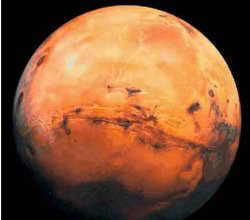
Mars is the seventh largest celestial body in our solar system. It is often referred to as the “Red Planet” because of its high concentration of iron oxide in the soil. Mars is home to two natural satellites, Deimos and Phobos.
The atmosphere of Mars is extremely thin, and its distance from the Sun is about 1.5 times that of Earth. As a result, the average annual temperature on Mars is -60 degrees Celsius, and temperature fluctuations can reach up to 40 degrees Celsius in certain areas during the day.
Mars is characterized by unique surface features, such as impact craters and volcanoes, valleys and deserts, and ice polar caps that resemble those on Earth. Notably, the planet boasts the tallest mountain in the entire solar system, Olympus Mons, an extinct volcano that towers at a staggering height of 27 km! Additionally, Mars is home to the Mariner Valley, the largest canyon in existence, which stretches an impressive 4500 km in length and plunges to a depth of 11 km.
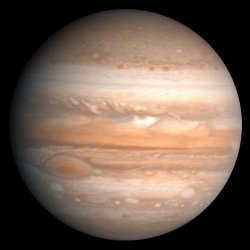
Jupiter, the biggest planet in our solar system, is 318 times more massive than Earth and nearly 2.5 times heavier than all the other planets combined. In terms of composition, Jupiter is similar to the Sun, consisting mostly of helium and hydrogen, and it emits a tremendous amount of heat, equivalent to 4*1017 watts. However, in order to become a star like the Sun, Jupiter would need to be 70-80 times more massive.
Jupiter has a total of 63 satellites, but it is worth mentioning only the largest ones – Callisto, Ganymede, Io, and Europa. Ganymede, the largest satellite in the entire solar system, even exceeds the size of Mercury.
As a result of various processes occurring in Jupiter’s inner atmosphere, there are numerous swirling structures in its outer atmosphere, including streaks of brownish-red clouds and the Great Red Spot, a massive storm that has been known since the 17th century.
Saturn
is a planet in our solar system.
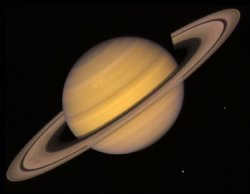
Saturn is the second largest celestial body in our solar system. Saturn is most known for its unique ring system, which is composed mainly of icy particles of varying sizes, ranging from tiny specks to several meters in diameter, as well as rocks and dust.
With a total of 62 moons, Saturn boasts an impressive satellite system, with Titan and Enceladus being the largest among them. Despite its similarities to Jupiter in terms of composition, Saturn has a lower density than even regular water. The planet’s outer atmosphere appears calm and uniform, owing to a thick layer of haze. However, in certain areas, wind speeds can reach an astonishing 1,800 km/h.
Uranus
Uranus, the seventh planet from the Sun, is a unique and fascinating celestial body in our solar system.
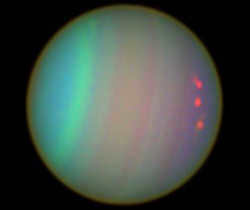
Uranus was the first planet to be discovered using a telescope and it is also the only planet in our solar system that has a unique orbit, “tilted on its side”.
Uranus has a total of 27 moons, all of which are named after characters from Shakespeare’s plays. The largest moons are Oberon, Titania, and Umbriel.
What sets Uranus apart from the other gas giants is its composition, which includes a significant amount of high-temperature variations of ice. This is why scientists classify Uranus, along with Neptune, as an “ice giant”. While Venus holds the record for being the hottest planet in our solar system, Uranus takes the title for being the coldest, with temperatures dropping as low as -224°C.
Neptune
Neptune is the outermost planet in the solar system. The story of how it was found is fascinating: scientists used mathematical calculations to determine its position in the sky before actually observing it through a telescope. This was prompted by the discovery of unexplained anomalies in the orbit of Uranus.
Currently, there are 13 known moons of Neptune. The largest of these is Triton, which is unique in that it orbits the planet in the opposite direction. The planet also experiences the fastest winds in the solar system, with speeds reaching up to 2200 km/h.
Neptune is considered the second “ice giant” in composition, similar to Uranus. However, it differs from the other gas giants, Jupiter and Saturn, in that it has an internal heat source and emits 2.5 times more energy than it receives from the Sun.
The distinctive blue hue of Neptune is attributed to the presence of methane in its outer atmospheric layers.
To sum up:
Unfortunately, Pluto did not make the cut in our lineup of solar system planets. However, this should not be a cause for concern, as the remaining planets remain in their designated positions despite evolving scientific perspectives and concepts.
Therefore, the answer to the question “How many planets are there in the solar system?” is eight.
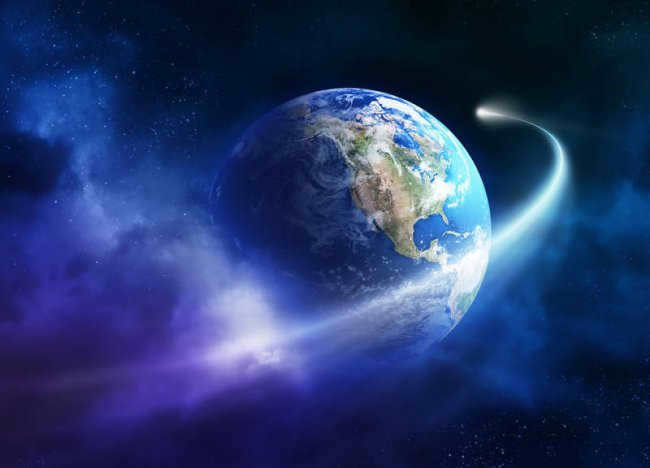
The universe is a treasure trove of enigmas. With our unaided vision, we can only catch a glimpse of a tiny fraction of the countless celestial entities, both grand and minuscule. Apart from our very own planet, there exist other colossal cosmic bodies that gracefully revolve around the radiant Sun. Astonishingly, some of these majestic orbs surpass the size of our humble abode. So, what might these behemoths be? Behold, the colossal planets of our solar system.
At the top of the list of the largest planets in our solar system is Eridas. It holds the second spot in terms of size, just behind Pluto, and is the farthest dwarf planet from the Sun. Erida was formerly known as Xena and at one point was considered the 10th planet in our solar system. However, in 2006 it was reclassified as a dwarf planet, joining Pluto in that category. For a while, it was believed that Erida was larger than Pluto, but recent research conducted by the New Horizons spacecraft has shown that Pluto is still slightly bigger than Erida.
Similar to Pluto, the surface of this dwarf planet is made up of methane rocks, ice, and snow.
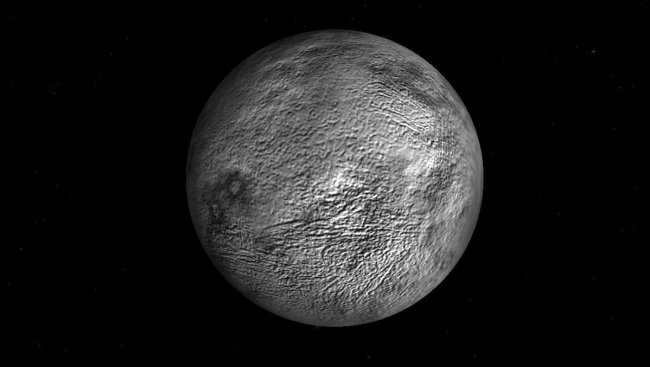
9. Pluto
Pluto used to be one of the nine planets in our solar system until recently. However, in 2006, the International Astronomical Union made the decision to reclassify it as a dwarf planet. Despite its new status, Pluto still holds the title of being the largest dwarf planet. It is also one of the largest objects located in the Kuiper belt. Unlike its neighboring planets, Pluto is relatively small in size, with a volume three times smaller than that of the Moon. Its surface resembles a frozen desert, adorned with countless craters. Additionally, Pluto is accompanied by five satellites: Kerber, Styx, Hydra, Charon, and Nycta.
The year 2006 saw the launch of the New Horizons automated space station with the objective of studying the celestial bodies Pluto and Charon. Following a successful journey, the spacecraft safely entered the orbit of Pluto, allowing it to gather valuable data and capture stunning photographs of the planet and its accompanying satellites. These findings were then transmitted back to Earth for further analysis and study.
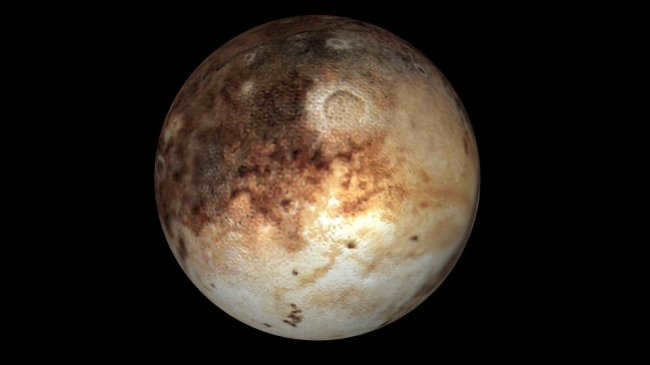
8. Mercury
Mercury takes the eighth spot in the list of the largest planets in the solar system. It is particularly fascinating due to its close proximity to the Sun, resulting in a Mercurian year lasting only 88 Earth days. Additionally, a day on Mercury lasts 176 Earth days, as the planet rotates around its axis at a slow pace.
The close distance to the Sun causes the temperature on the side of the planet facing the star to reach 349.9 ° C.
Mercury’s surface is desolate, resembling a lifeless desert covered with craters of various sizes. The planet has no moons.
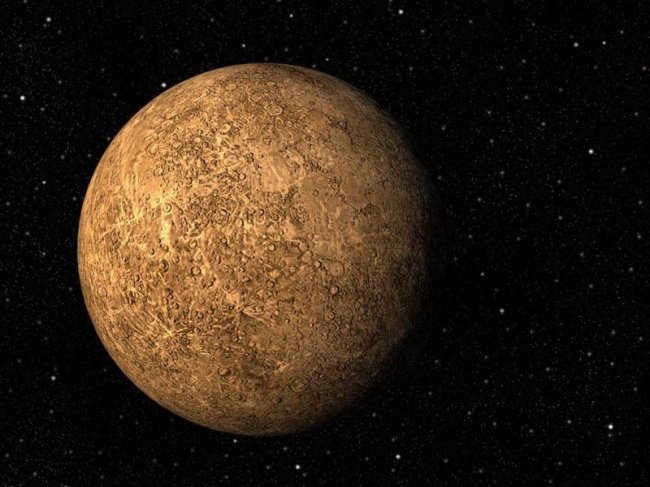
7. Mars
Mars takes the seventh spot on the list of the largest planets in our solar system. It has been extensively explored by humans, with over 30 visits from Earth’s spacecraft. Mars is a fascinating planet, boasting the largest peak in the entire solar system: Mount Olympus, which stands at a staggering 27 kilometers in height. Similar to Earth, Mars experiences changing seasons and has polar caps composed of frozen carbon dioxide and ice. A Martian day lasts 24 hours and 40 minutes. Due to its characteristics, Mars is considered one of the most viable planets for future colonization.
Mars has two satellites, namely Deimos and Phobos.
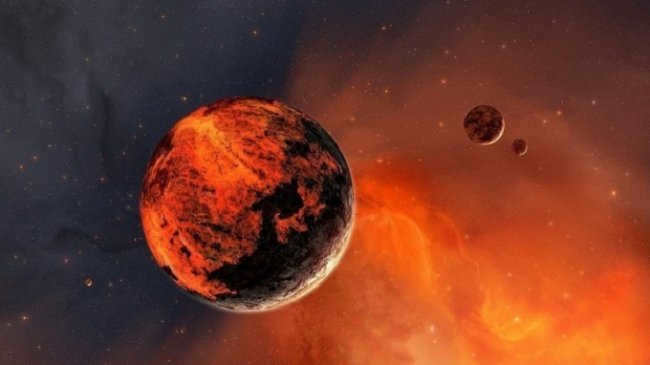
6. Venus
Venus is next on the list of the biggest planets in our solar system. Named after the Roman goddess of love, Venus is also known by other poetic names such as the Evening Star and the Morning Star. While Venus is slightly smaller than Earth, it is quite different in terms of its conditions. Unlike Earth, Venus has an atmosphere composed mainly of carbon dioxide and its surface is concealed by massive clouds of sulfuric acid. It is believed that Venus still experiences active volcanic activity. The surface temperature on Venus is a scorching 460 °C.
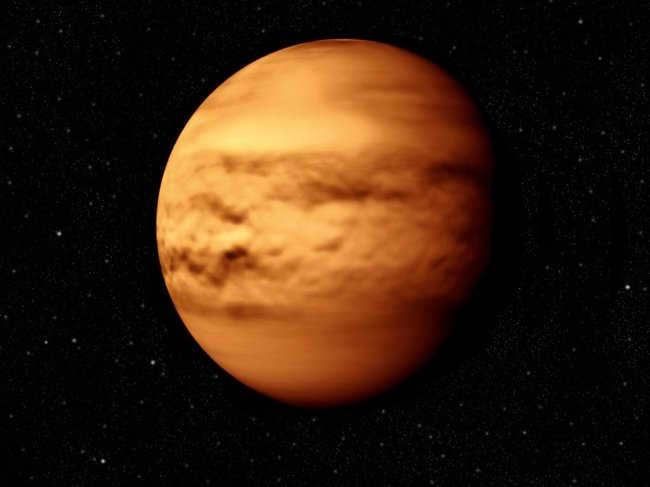
5. Planet Earth
Taking the fifth spot on the roster of the solar system’s largest planets is Earth. This celestial body is truly one-of-a-kind in the observable Universe as it is the home to intelligent life. A staggering 70% of Earth’s surface is covered by water, making it a predominantly blue planet. Thanks to its strategic position and the gentle tilt of its rotational axis, Earth boasts optimal conditions for the emergence and sustenance of life.
Earth has a loyal companion known as the Moon.
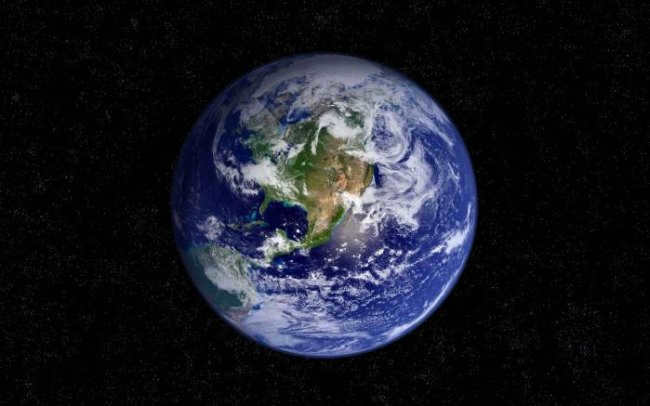
4. Neptune
Neptune is one of the biggest and most distant planets in our solar system. It is a massive gas giant, with a mass 17 times that of Earth. The planet’s atmosphere is composed mainly of helium and hydrogen. However, unlike its gaseous exterior, Neptune has a solid core made up of rocks and ice. One of the most fascinating aspects of this planet is the incredibly powerful winds that constantly rage across its surface, reaching speeds of up to 2100 km/h.
Neptune, although not visible to the naked eye, was actually discovered through mathematical calculations.
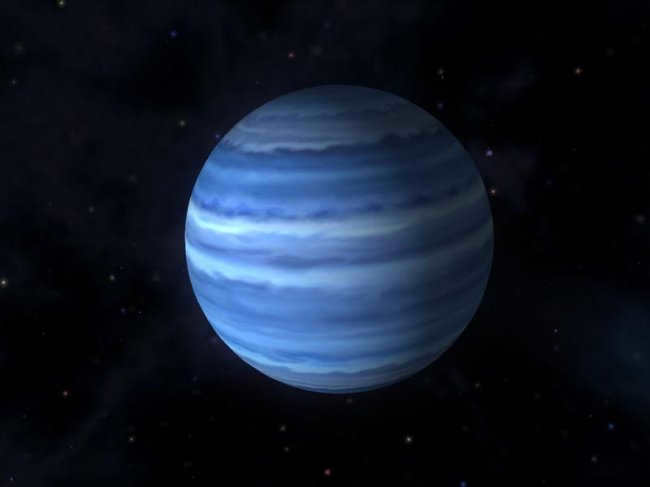
3. Uranus
Uranus takes the third spot in the list of the largest planets in our solar system. This gas giant is truly remarkable in terms of its size, with a diameter that is 104 times that of Earth. The composition of Uranus’ atmosphere includes helium, hydrogen, and methane.
The study of Uranus is a captivating field of research. So far, the Voyager 2 spacecraft is the only mission to have visited this gas giant, capturing and transmitting images back to Earth. However, there are plans for a comprehensive investigation of the planet and its moons in the future.
In addition to its intriguing features, Uranus is also known for its ring system and collection of 27 satellites, varying in size from 20 to 1500 km.
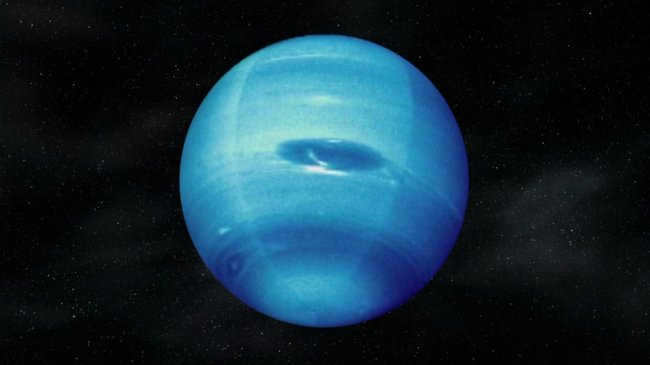
2. Saturn
Ranking second among the largest planets in our solar system is Saturn. Similar to Uranus and Neptune, Saturn is composed of various gases that transform into a liquid state at certain depths. This gas giant has a mass 95 times greater than that of Earth. Saturn is renowned for its iconic rings and an impressive collection of satellites, currently numbering 62. Among them, Titan, the largest moon of Saturn, surpasses the size of Mercury. Saturn has been extensively studied, with the Pioneer, Voyager, and Cassini spacecraft all making visits to this fascinating giant planet.
